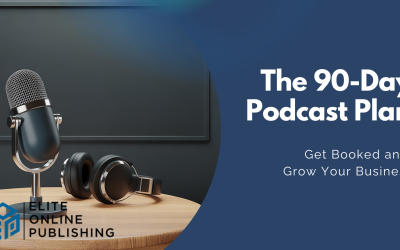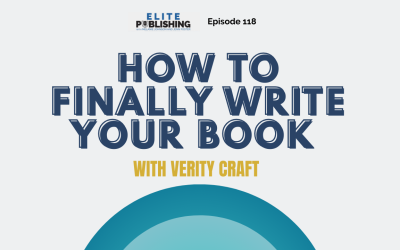Self-publishing has become a popular and accessible option for many aspiring authors. We believe in empowering business leaders and entrepreneurs to share their stories and expertise with the world, so we love to help people take control over the publishing process and learn how to self-publish. Self-publishing offers complete control over your work, higher royalty rates, and the flexibility to market your book as you see fit. Here are the essential steps to successfully self-publishing your book. Don’t worry, just become it’s “self” publishing, doesn’t mean you are expected to do it all on your own. Having a small team of experienced publishers on your side to help you navigate the ins and outs of publishing can make the difference that helps you become a bestselling author. Learn more here!
Step 1: Write and Edit Your Manuscript
The first step in self-publishing is writing your manuscript. When writing you book, consider your ideal reader and client, write this book for them. Set aside dedicated time each day to write and stay consistent with your goals. Once your manuscript is complete, it’s crucial to edit and revise it thoroughly. Consider hiring a professional editor to ensure your book is polished and free of errors. A well-edited book is more likely to resonate with readers and receive positive reviews.
Step 2: Design a Professional Book Cover
Your book cover is the first impression potential readers will have of your book. A professionally designed cover can significantly impact your book’s success. Work with a graphic designer to create a visually appealing and genre-appropriate cover that attracts attention and conveys the essence of your book. It seems so simple to just create your cover from a canva template, but trust us that will not make your book sell. No one will read your book and become your ideal client if they are never drawn to look at it. Learn more about book covers here.
Step 3: Format Your Book for Print and Digital
Formatting your book correctly for both print and digital versions is essential. Each format has specific requirements that need to be met to ensure a seamless reading experience. For print books, consider factors like trim size, margins, and font size. For digital books, focus on creating a format compatible with e-readers, including clickable table of contents and optimized images.
Step 4: Choose Your Self-Publishing Platform
Selecting the right self-publishing platform is crucial for distributing your book. Popular platforms include Amazon Kindle Direct Publishing (KDP), IngramSpark, and Barnes & Noble Press. Each platform has its unique advantages, so research and choose the one that best fits your goals. These platforms provide tools and resources to help you publish and distribute your book globally.
Step 5: Set Your Book Pricing and Royalties
Determine the pricing for your book based on factors like genre, length, and target audience. Consider the royalties offered by different self-publishing platforms and choose a pricing strategy that maximizes your earnings while remaining competitive in the market. Some platforms allow you to set different prices for print and digital versions, so take advantage of this flexibility.
Step 6: Build a Launch Team
As you prepare for your book launch, building a launch team can be instrumental in promoting your book effectively. Recruit loyal fans, peers, and supportive friends or family members who are eager to help. Organize your team through a dedicated communication channel, assign roles based on their strengths, and provide incentives to keep them motivated. A well-coordinated launch team can create significant buzz and drive initial sales. We have talked a lot about launch teams here, and there is a reason for it. Don’t skip out on your opportunity to leverage the people in your life who already support you!
Step 7: Launch and Market Your Book
Launching your book involves more than just hitting the publish button. Create a comprehensive marketing plan that includes pre-launch activities, such as building an author website, growing your email list, and engaging with your audience on social media. Plan a book launch event, whether virtual or in-person, to generate buzz and excitement around your book.
Effective marketing strategies include:
- Social Media Marketing: Leverage platforms like Facebook, Instagram, LinkedIn, and Twitter to promote your book and connect with potential readers.
- Email Marketing: Build an email list and send regular updates, exclusive content, and promotional offers to your subscribers.
- Press Releases and Media Outreach: Send press releases to relevant media outlets and bloggers to gain publicity for your book.
- Book Reviews and Testimonials: Encourage readers to leave reviews and testimonials on platforms like Amazon and Goodreads to build credibility and attract more readers.
Step 8: Monitor Sales and Gather Feedback
After your book is published, regularly monitor your sales and gather feedback from readers. Use this information to refine your marketing strategies and improve future editions of your book. Engaging with your readers and responding to their feedback can help build a loyal fan base and drive word-of-mouth marketing.
FAQ
What are the benefits of self-publishing compared to traditional publishing?
Self-publishing offers complete control over your book, higher royalty rates, and the flexibility to market your book as you see fit. It allows you to retain all rights to your work and make decisions regarding pricing, distribution, and marketing strategies.
How much does it cost to self-publish a book?
The cost of self-publishing can vary widely depending on factors such as editing, cover design, formatting, and marketing. Budgeting for professional services like editing and design is crucial to ensure a high-quality book. On average, self-publishing costs can range from a few hundred to several thousand dollars.
How do I choose the right self-publishing platform?
Research popular self-publishing platforms like Amazon KDP, IngramSpark, and Barnes & Noble Press. Consider factors such as distribution reach, royalty rates, and ease of use. Choose the platform that aligns with your publishing goals and provides the best support for your needs.
What marketing strategies should I use to promote my book?
Effective marketing strategies include social media marketing, email marketing, press releases, media outreach, book reviews, and testimonials. Develop a comprehensive marketing plan that includes pre-launch activities and ongoing promotion to maximize your book’s visibility and sales.
Self-publishing is an exciting journey that allows you to share your story and expertise with the world. At Elite Online Publishing, we are committed to helping you navigate this process and achieve your publishing goals. Contact us today to start your self-publishing journey!




![[New Release] The Golden Blueprint by Mark Parrish](https://eliteonlinepublishing.com/wp-content/uploads/2026/01/Mark-Parrish-New-Release-Elite-Blog-Post-1-400x250.png)


0 Comments